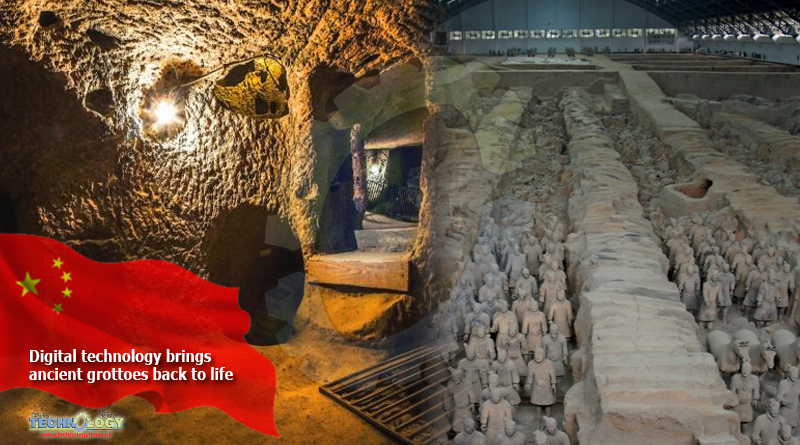Supported by 3D printing technology, a full-size reproduced cave from the 1,500-year-old Yungang Grottoes, a UNESCO World Heritage Site, is expected to debut soon in a museum in east China’s Zhejiang Province.

Based on the original Cave No. 12, also called the “Cave of Music,” in the Yungang Grottoes, the replicated grotto consists of more than 1,300 printed modules. It is 14 meters long, 12 meters wide and nine meters high.
The exhibit is the latest integration of technology with heritage protection. High-tech methods have been used to contribute to preserving the treasured relics.
“The replica of the grotto is made of light materials and can be dismantled and pieced together like building blocks. In the future, we can display it worldwide to help more people learn about the Chinese culture,” said Ning Bo, director of the digitalization office of the Yungang Grottoes Research Institute.
Ning said it took around three years to complete the project which includes data collection and processing, 3D printing of modules and coloring.
The Yungang Grottoes in Datong, north China’s Shanxi Province, boast 45 major caves and more than 59,000 statues and were inscribed on the UNESCO World Cultural Heritage list in 2001.
Researchers started exploring the digitalization of the Yungang Grottoes in 2003, trying to permanently preserve its valuable cultural relics and historical documents through digital technologies.
Thanks to 3D printing technology, a reproduction of Cave No. 3 in the Yungang Grottoes was displayed in the eastern coastal city of Qingdao in 2017, while another replica based on Cave No. 18 was showcased in Beijing in 2018.
Digital technologies have also been adopted in creating a three-dimensional digital archive and a monitoring system for the caves.
Zhang Zhuo, head of the Yungang Grottoes Research Institute, said the digital platform integrating protection, research, management and display can allow people to learn the current condition of the grottoes and to promptly grasp the morphological changes of the cultural relics in years to come.
If the grottoes are damaged due to natural disasters or human factors, it will be possible to carry out repairs with high precision, Zhang said.
In recent years, China has been promoting digital technologies including laser scanning, 3D modeling and photogrammetry to conserve cultural heritage sites, especially ancient architectures such as the Yungang Grottoes and Dunhuang Mogao Grottoes in northwest China’s Gansu Province.
Loose rocks, water seepage and weathering all pose a risk to the Yungang Grottoes. Efforts have been made to curb environmental pollution in the surrounding areas, reinforce loose rocks around the caves and restore the murals and statues to make the ancient grottoes regain their past glory, according to Lu Jiwen, deputy head of the institute.
As the replica of Cave No. 12 is about to go on display in Zhejiang, more than 20 relics workers are treating the cracks and other erosions of the original cave in the Yungang Grottoes.
After dozens of years of efforts, the Yungang Grottoes are in good shape. “With the help of digital technologies, we have shifted our focus from rescue conservation to preventive and research-oriented protection,” said Lu.
Courtesy: china.org.cn
